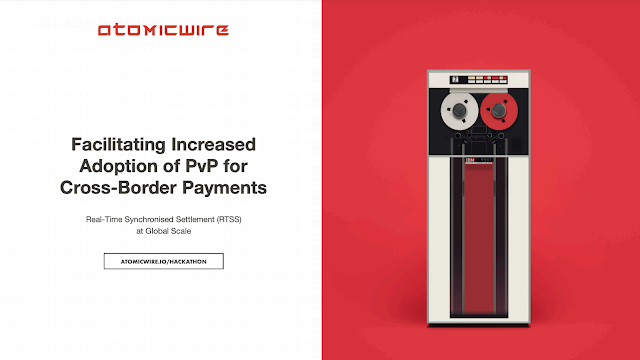How EDA and Flow May Revolutionize How Money Moves
Fairly often a reader of Flow Architectures: The Future of Streaming and Event-Driven Integration will share something that indicates possible accelerated development of the World Wide Flow. One case in point is a tweet from John Tipper regarding a proposal from financial services consultancy, Atomic Wire, to rethink the way we settle cross-border payments across the world:
I received my Flow Architectures book by @jamesurquhart (it’s great, btw). One of the directions of travel he identifies via Wardley Mapping is need for interoperability. Use of ISO20022 conceptual layer here is pretty novel. @clemensv, you may find some interesting ideas here? https://t.co/pbVC17QT4A
— John Tipper (@john_tipper) March 23, 2021
The quoted tweet links to a page where you can download a report Atomic Wire prepared for a hackathon put on by the Bank for International Settlements (BIS) and financial messaging services powerhouse, SWIFT. In the report, Atomic Wire (which I will abbreviate to AW) presents prototype that demonstrates rapid settlement of cross-border payments using unbounded streams and a protocol from the Bank of England.
OK, there is a lot to unpack there, but let me take a stab at breaking this down while pointing out how all of this aligns with the concept of the World Wide Flow.
First, speeding up settlements (without raising new risks) is very important. Atomic Wire points out that the world's banks carry around 9 trillion dollars every single dingle day. (I figure $9T is worth the extra "dingle"—no regrets.) If we can settle much more quickly, we can reduce the risk that one party in the transaction won't be able to complete its obligations. Furthermore, money won't be tied up as long in escrow accounts waiting for both parties to complete said obligations.
The basic process is demonstrated in the diagram below:
Atomic Wire's solution (and I'm sure there are others like it) promises to achieve this objective. The AW solution is essentially a Facilitator pattern service that uses the ISO 20022 standard for financial messages to enact the Bank of England synchronization protocol through an Apache Flink stateful stream processing infrastructure. In other words, it uses a common messaging protocol (ISO 20022) through a common interface (not clear to me, but either the Flink pubsub API or possibly SWIFT's messaging APIs?) on commodity software. The result is interesting for a number of reasons:
- This solution enables the settlements system to resolve settlements as soon as both parties confirm that their respective actions have been taken. No hold time for batch processing later.
- The solution AW demonstrated handled >100,000 atomic transactions a second on 32 processing cores (details are in the report). That is, according to AW, about 73% of the worlds total transaction volume. This is yet another example of how stateful stream processing can handle immense event volumes with surprisingly low hardware needs.
- The ISO 20022 standard is a great example of an existing industry standard for semantics and structure that could easily be adopted to use CloudEvents or a similar metadata standard in the future to create flow-compliant streams. Or, it is (remotely) possible that the World Wide Flow will be built off of portions of the ISO 20022 standard, given its prove use in a highly demanding domain.
- In the book, I called out the value of streaming solutions replacing batch solutions in many domains. In this example, it would replace a slower, less reliable real-time system that in turn replaced a batch processing system.





Comments
Post a Comment